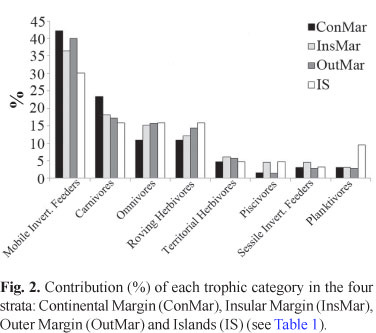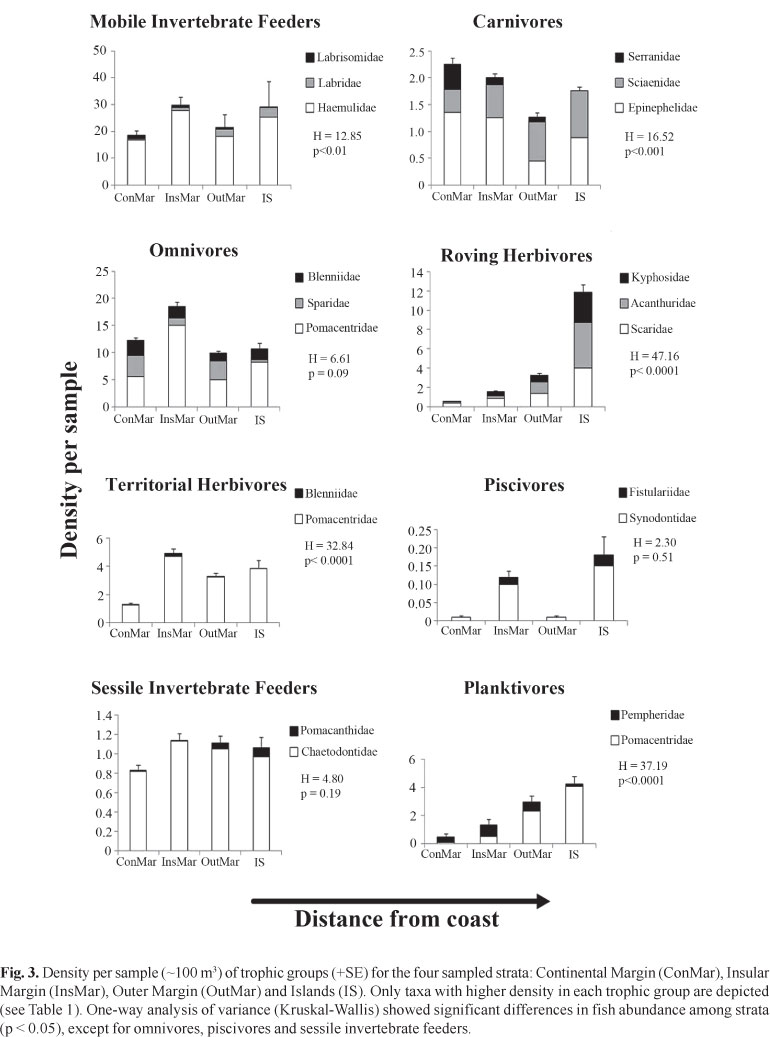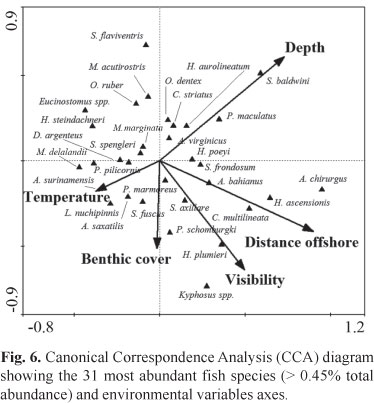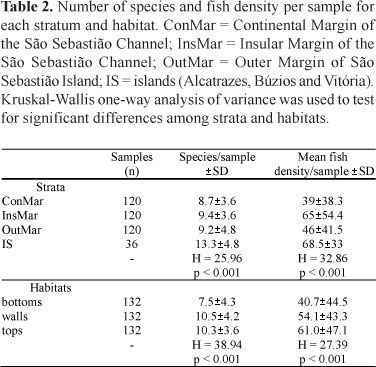Local assemblages of fishes associated with reefs are influenced by interactions among the availability of larvae and survival of recruits with subsequent biotic and abiotic forcing, as well as by periodic and episodic disturbances of varying natures and magnitudes. Therefore, besides being structurally heterogeneous and patchily distributed, reef systems are strongly context-dependent due to the influence of a broad array of ecological processes. In order to assess interactions of local factors that influence the distribution and abundance of reef fishes within a coastal mosaic of rocky reefs, we tested the null hypothesis of no significant variation in fish assemblage structure, by comparing 33 sites along the northern coast of the São Paulo State, Southeastern Brazil. Replicated stationary visual census samples (n = 396) were obtained at different distances from the coast, depths and wave exposures, including the mainland, three relatively small coastal islands, and the two margins of a wide channel between the mainland and the large São Sebastião Island (~350 km²), totaling 225 h of SCUBA diving. The regional rocky shore fish fauna comprised 106 species (41 families), with preponderance of diurnal mobile-invertebrate feeders. Samples from the outer margin of the São Sebastião Island, together with those from Alcatrazes, Búzios, and Vitória islands were significantly dissimilar from samples from the coastal sites at the São Sebastião Channel. Species richness tended to increase in a gradient from the coast to the more offshore islands. Local conditions such as depth and other habitat characteristics also influenced fish assemblages' structure. Distance from coast and depth were the main predictors for fish assemblages, followed by water transparency, temperature and benthic cover. This study represents the first regional-scale assessment of fish assemblages associated with rocky reefs in the São Paulo State coast, filling a major geographic knowledge gap in the South Atlantic. As the study region is experiencing fast coastal development and growing threats from seaport expansion, oil and gas exploitation, as well as increasing fishing and tourism pressure, the understanding of the underlying factors that influence the distribution and abundance of the reef-associated biota comprises a relevant baseline for monitoring, conservation planning and management.
Coastal management; São Paulo coast; São Sebastião Channel; South Atlantic; Species richness









